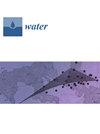Impact of Land Use/Cover Change on Soil Erosion and Future Simulations in Hainan Island, China
IF 3
3区 环境科学与生态学
Q2 ENVIRONMENTAL SCIENCES
引用次数: 0
Abstract
Soil erosion (SE) is a critical threat to the sustainable development of ecosystem stability, agricultural productivity, and human society in the context of global environmental and climate change. Particularly in tropical island regions, due to the expansion of human activities and land use/cover changes (LUCCs), the risk of SE has been exacerbated. Combining the RUSLE with machine learning methods, SE spatial patterns, their driving forces and the mechanisms of how LUCCs affect SE, were illustrated. Additionally, the potential impacts of future LUCCs on SE were simulated by using the PLUS model. The main results are as follows: (1) Due to LUCCs, the average soil erosion modulus (SEM) decreased significantly from 108.09 t/(km2·a) in 2000 to 106.75 t/(km2·a) in 2020, a reduction of 1.34 t/(km2·a), mainly due to the transformation of cropland to forest and urban land. (2) The dominant factor affecting the spatial pattern of SE is the LS factor (with relative contributions of 43.9% and 45.17%), followed by land use/cover (LUC) (the relative contribution is 28.46% and 34.89%) in 2000 and 2020, respectively. (3) Three kinds of future scenarios simulation results indicate that the average SEM will decrease by 2.40 t/(km2·a) under the natural development scenario and by 1.86 t/(km2·a) under the ecological protection scenario by 2060. However, under the cropland protection scenario, there is a slight increase in SEM, with an increase of 0.08 t/(km2·a). Sloping cropland erosion control remains a primary issue for Hainan Island in the future.中国海南岛土地利用/植被变化对土壤侵蚀的影响及未来模拟
在全球环境和气候变化的背景下,土壤侵蚀(SE)对生态系统的稳定性、农业生产力和人类社会的可持续发展构成了严重威胁。特别是在热带岛屿地区,由于人类活动的扩张和土地利用/覆盖变化(LUCCs),水土流失的风险更加严重。结合 RUSLE 和机器学习方法,说明了 SE 空间模式、其驱动力以及 LUCCs 如何影响 SE 的机制。此外,还利用 PLUS 模型模拟了未来 LUCC 对 SE 的潜在影响。主要结果如下(1)由于 LUCCs,平均土壤侵蚀模数(SEM)从 2000 年的 108.09 吨/(km2-a)显著下降到 2020 年的 106.75 吨/(km2-a),减少了 1.34 吨/(km2-a),这主要是由于耕地向林地和城市用地的转变。(2) 2000 年和 2020 年,影响 SE 空间格局的主导因素是 LS 因素(相对贡献率分别为 43.9% 和 45.17%),其次是土地利用/覆盖(LUC)(相对贡献率分别为 28.46% 和 34.89%)。(3)三种未来情景模拟结果表明,到 2060 年,在自然发展情景下,平均 SEM 将减少 2.40 吨/(km2-a),在生态保护情景下,平均 SEM 将减少 1.86 吨/(km2-a)。然而,在耕地保护情景下,SEM 会略有增加,增加 0.08 吨/(平方公里-a)。坡耕地水土流失控制仍是海南岛未来的首要问题。
本文章由计算机程序翻译,如有差异,请以英文原文为准。
求助全文
约1分钟内获得全文
求助全文
来源期刊

Water
WATER RESOURCES-
CiteScore
5.80
自引率
14.70%
发文量
3491
审稿时长
19.85 days
期刊介绍:
Water (ISSN 2073-4441) is an international and cross-disciplinary scholarly journal covering all aspects of water including water science and technology, and the hydrology, ecology and management of water resources. It publishes regular research papers, critical reviews and short communications, and there is no restriction on the length of the papers. Our aim is to encourage scientists to publish their experimental and theoretical research in as much detail as possible. Full experimental and/or methodical details must be provided for research articles. Computed data or files regarding the full details of the experimental procedure, if unable to be published in a normal way, can be deposited as supplementary material.
 求助内容:
求助内容: 应助结果提醒方式:
应助结果提醒方式:


